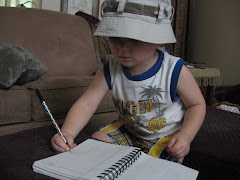Franco, B. ed. (2001).
Things I have to tell you: Poems and writing by teenage girls. Ill.
N. Nickles. Cambridge ,
MA
Powerful images lay ready to invade the senses in Betsy
Franco’s collection of writing by teenage girls ages 14-19. In Betsy Franco’s preface, she states that in
this collection of writing, “you will find the hope, disillusionment, anger,
joy, sadness, and most of all, the strength of young women today” (p. xi).
The last poem in the book express the joy and optimism found
in many of the young writers:
I know I am
strong
both in my convictions and in myself.
I know I am
beautiful
both inside and out.
I know I am
powerful
and growing more so.
I know I
will do just fine.
Laura Veuve, age 15
However many more of the poems and essays express the
difficulty of becoming a young woman now.
As an adult reader – a teacher, as well as a mother of two daughters who
have struggled to grow up in a world where they were not always nurtured, I
found myself saddened and frightened by some of the experiences these girls
shared. Experiences with boys, drugs, suicide
attempts, body image, and friendships gone awry.
Betsy Franco’s desire was that girls who had lived through
many of the difficulties growing up could share with others their struggles,
their successes, their frustrations, and their joys so that they could help each
other cope. The photos by Nina Nickles do a beautiful job of reflecting the everyday lives of teenage girls.
The poems in this book may not be choices I would make in
read-alouds to my classes, but they are a valuable resource for students who
are growing up in a time and a place where it can be hard becoming a
woman. The writings will hopefully
empower young women to become who they know they can become.
Franco has a matching book for boys You Hear Me? Poems and Writing
by Teenage Boys that includes
70 writings by 50 young men.
Teachers and media specialists may want to be prepared to
defend these choices being on their library shelves. The topics and the language are raw and
uncensored. The potential exists for
parental challenge. However, this is how
teens are feeling and the writings reflect their concerns. I believe that teens deserve access to the
thoughts of those who are like they are.
Together, young men and women can help each other navigate the turbulent
waters of adolescence.











